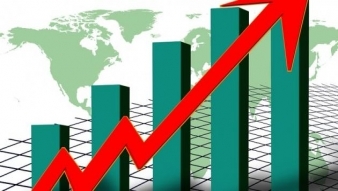Contents
1 Inflation Concept
2 Types of Inflatio
n 3 Inflation Characteristics
4 Inflation History
5 Reasons for Inflation
Concept Inflation is the economic rate that leads to an increase in the overall level of prices of services and goods, leading to a decrease in purchasing power Inflation is defined as the continuous and general rise in prices. [2] Another definition of inflation is the excessive increase in circulation with low purchasing power. [3] Inflation types divide inflation into a group of species, based on various economic criteria: [4] Standard pressure Inflationary, and divides into two types: inflation Tlba: is the increase in prices due to high demand for supply; which leads to the show's inability to cope with the rise in demand; because of the full use of productive elements, or lack of flexibility of the means used in the supply to meet the excess demand. Cost inflation: is to increase the costs of production factors at a rate exceeding the rate of increase in production, which leads to a rise in the level of public prices, and the most important factors productive labor costs that increase rates and increase the levels of benefits of production achieved. The inflation criterion is divided into three types: apparent inflation: the government and monetary authorities take a negative attitude towards this inflation; which leads to the spread of its phenomena, their accumulation and acceleration, the levels of public prices rise at a higher rate than the increase in the circulation of money to the quantities traded. Repressed inflation: An economic situation in which prices are fixed, with inflation pressures; because of the freezing of public power prices; in the adoption of legislation or administrative decisions for this type of inflation. Hidden inflation: the emergence of a significant increase in cash entry without a method of disbursement; because of the intervention of the state, the various procedures become without the exchange of increasing incomes; which leads to the survival of inflation is hidden can not be seen. The criterion of belonging factors leading to inflation, divided into two types: Local inflation: the emergence of inflation due to local factors in the state, and external factors have no significant impact in the occurrence. Imported inflation: is the increase in domestic price levels; due to the impact of a range of external factors is clearly. The inflation criterion is divided into two types: hyperinflation: the emergence of successive high price rises; they lead to significant and harmful effects, which are difficult to limit or manage by government authority, and the loss of money for their value and purchasing power; Individuals are paid to dispose of the money with them. Inflation is the average price increase that is less than hyperinflation, with the role of money as a financial intermediary, but not completely lost confidence; government power can rebalance its own functions. Characteristics of inflation As one of the most important economic phenomena, inflation is characterized by a number of characteristics: [5] Inflation is the result of many economic factors that may conflict together; inflation is therefore a complex, complex and multidimensional phenomenon. Inflation results from imbalances in the relations between prices of services and goods, and the prices of productive elements such as product costs, wages and profit levels. Inflation leads to a devaluation of currencies relative to prices of services and products, expressed in the form of purchasing power parity. The history of inflation dates back to the 19th century. The focus of the study was linked to monetary inflation. When the supply of money increases in proportion to the demand, it will lead to a decrease in value. This will lead to a rise in price levels in general. Money for its presentation will increase its value and price levels will fall. [5] Analysis and studies by economic thinker Keynes have emerged, focusing on the factors controlling national cash income levels, namely, the tendency to consume, interest rates, capital adequacy This led to Keynes' concept of inflation, which was seen as an increase in total demand for the real size of the offer, contributing to a series of continuous and sudden rises in public price levels. [5] The Modern Swedish School was founded in the second half of the 20th century , And added importance to the economic outlook through the critical analysis used with inflation, you see that the relationship between total supply and demand does not depend on national production plans, national expenditure plans, but depends on the relationship between savings plans and investment plans. The emergence of the phenomenon of inflation depends on several reasons, the most important of which are: [6] The rise in investment and consumption expenditure: the increase in total expenditures from the full level of employment, reflecting the increase in total demand for the total supply at the level of employment, The increase in total expenditures with no increase in the supply of goods; ie, there is surplus demand, which is offset by a fixed supply of products and services. The budget deficit is the increase in public expenditure compared to public revenues. It is one of the methods by which governments depend on financing production projects in progress. The budget deficit affects the economic situation of countries in general. Lack of productive elements: a decline in the number of workers or raw materials, and other elements of production that affect the overall production process and lead to the emergence of inflation; due to the low supply and high prices. The decline in capital in kind: the emergence of a shortage of capital used in the level of operation, and leads to inflexibility of production;
